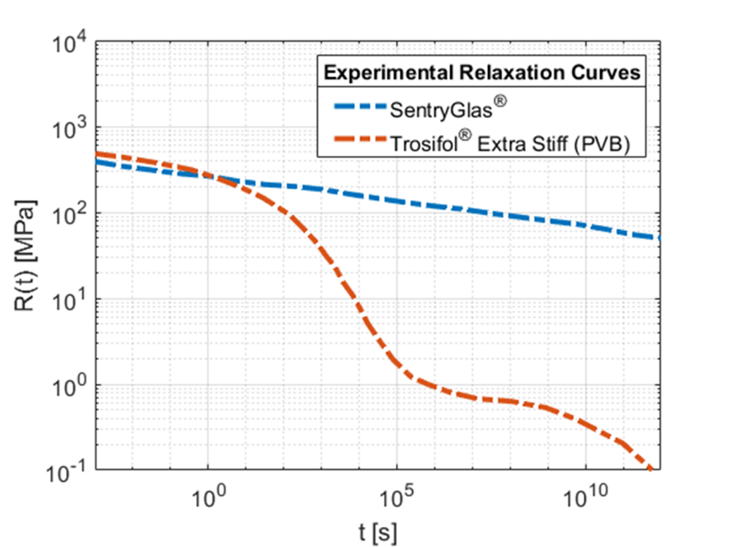Viscoelastic Fractional Model with a Non-Uniform Time Discretization for Laminated Glass: Experimental Validation
DOI:
https://doi.org/10.47982/cgc.9.619Downloads

Abstract
We discuss a novel approach, based on fractional calculus with a non-uniform time discretization, to numerically simulate interlayer viscoelastic behaviour and associated time-dependent deformation of laminated glass. Reference is made to the classic example of a simply supported laminated glass beam under long-duration loads. The fractional model is compared with some results obtained using the widely used finite element software ABAQUS 2021, which for the viscoelastic properties of the polymeric interlayer, utilizes the more traditional approach based on the Wiechert model and approximation via Prony series of the relaxation function and a uniform discretization of time for the numerical solution. The model is also validated through the comparison with experimental test. The novel approach based on fractional calculus presents two main advantages: 1) the definition of the model parameters from experimental data is simplified; and 2) the numerical implementation is easier and computationally more efficient. When a long observation time is considered, the use of a non-uniform time discretization presents the great advantage of not neglecting any part of the relaxation function. Use of traditional uniform time discretization requires the use of large time steps making it impossible to describe all the changes of the relaxation curve within the large time interval. Practical examples will be presented using viscoelastic models for Trosifol® Extra Stiff (PVB) and SentryGlas® interlayers. This methodology also shows potential to advance next generation standards for the design of structural laminated glass.
Published
Issue
Section
Experimental & Numerical Investigations
License
Copyright (c) 2024 Lorenzo Santi, Stephen Bennison, Michael Haerth

This work is licensed under a Creative Commons Attribution 4.0 International License.



